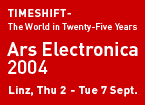Jeff Johnson
From a series of cross-cultural studies on the evolution of group or network structue in Antarctic research stations it is evident that despite similarity in natural environments (e.g., cold, isolation), organizational goals (e.g., conducting science), formal organizational structure, physical settings, group size, and duration of isolation across yeas, group dynamics can vary dramatically from one group to another even within the same physical and cultural settings.
Thus, network dynamics are largely a function of both formal and informal factors (e.g., the emergence of informal sociaroles) that have variable effects on the patterns of interaction and connection among network actors. This lecture demonstrates how the dynamic visualization of social networks contributes to a better understanding of the emegent social processes underlying human interaction inextreme and isolaed conditions typical of Antarctic research stations. Data and dynamic network visualizations from 3 winter-over crews at the American Amundsen-Scott SouthPole Station provide important analogs for understanding the human challenges inherent in future space travel.
Jeff Johnson (USA), East Carolina University, Institute for Coastal and Marine Ressources
"Visualizing Group Dynamics at the Amundsen-Scott South Pole Station"
"Language of Networks" is a joint project of FAS.research and Ars Electronica Center.
 back
back

